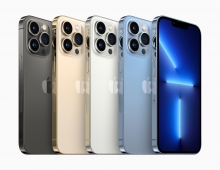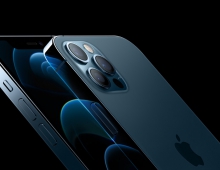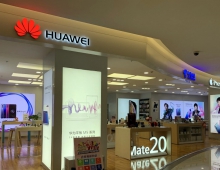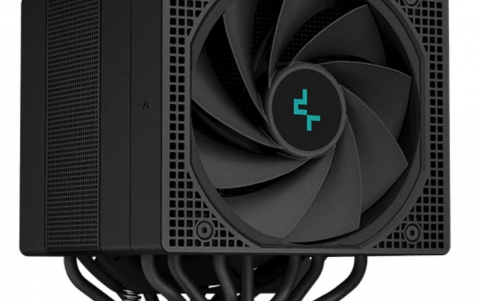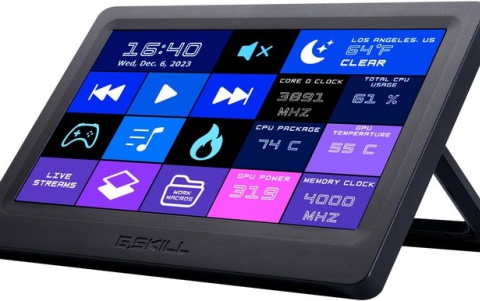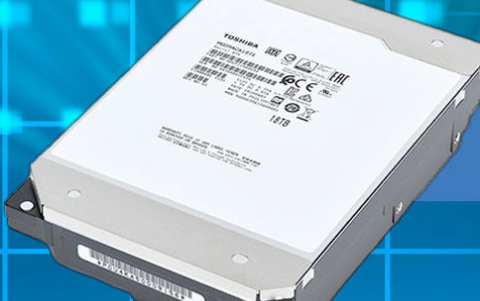
Each iPhone Costs Apple Just $265: iSupply
Apple's 8Gbyte version of the iPhone has a total hardware manufacturing cost of $265.83, generating a margin in excess of 55 percent on each 8Gbyte iPhone sold at the $599.00 retail price, according to iSupply.
The research company reported the results of its teardown analysis of the Apple iPhone, conducted last weekend.
"Apple's 8Gbyte version of the iPhone has a total hardware BoM and manufacturing cost of just $265.83, generating a margin in excess of 55 percent on each 8Gbyte iPhone sold at the $599.00 retail price," said Andrew Rassweiler, principal analyst for iSuppli.
Note that these costs do not include royalties and logistics expenses.
The analysis also showed that Infineon, a new supplier to the iPod family, is among the biggest winners in terms of semiconductor content. The German semiconductor supplier contributed the digital baseband, radio-frequency transceiver and power-management devices, providing much of the core communications capability of the iPhone. Altogether, Infineon?s silicon content accounted for $15.25 worth of the iPhone BoM, representing 6.1 percent of the 8Gbyte version of the product?s total cost.
National?s contribution to the iPhone BoM is relatively small, with its lone chip in the product costing $1.50, which represents less than 1 percent of total product cost. However, the part?a serial display interface?represents an important design win for National, which has never had a part in an iPod. The chip, which connects the display to the graphics controller, uses National?s Mobile Pixel Link standard, which the company has been attempting to promote for use in mobile devices. This is a significant win for National in a high-profile platform that is expected to ship in large volume.
One of the key features of the iPhone is the touch screen, and iSuppli believes the supplier for the touch screen module in the model torn down by iSuppli was Balda of Germany in association with its partner TPK Holding of China. The module costs an estimated $27, representing 10.8 percent of the 8Gbyte model's cost.
iSuppli believes the iPhone (LCD) display itself is supplied by multiple sources: Epson Imaging Devices Corp., Sharp Corp. and Toshiba Matsushita Display Technology Co. Ltd. The cost of the LCD used in the iPhone is estimated at $24.50, representing 9.8 percent of the 8Gbyte version's costs.
Perhaps the biggest winner among the component suppliers for the iPhone was Samsung. The South Korean electronics giant supplies the iPhone applications processor, which includes an ARM RISC core. The processor costs $14.25 in both versions of the iPhone.
The company also contributed the NAND flash memory and DRAM for the iPhone. In the 4Gbyte version, Samsung has $24 worth of NAND flash, and $48 in the 8GByte version. For both versions, Samsung supplies 1Gbit of Double Data Rate SDRAM worth $14.00.
Samsung has $76.25 worth of semiconductor content in the 8Gbyte version of the iPhone, giving the company a 30.5 percent share of the product's hardware cost?the largest total of any single supplier.
Other companies scoring design wins in the iPhone include:
Wolfson, which continues to maintain its design win for the audio codec a notable achievement given the obvious challenge to maintain design wins from generation to generation in the iPod family. CSR plc, which supplies the iPhone Bluetooth silicon costing $1.90. Marvell, which is contributing a Wi-Fi baseband chip costing $6.00.
Sales of the iPhone have kicked off with a bang, and iSuppli believes that this strong performance will continue. Shipments of iPhones are expected to amount to 4.5 million units this year, and will expand by a factor of nearly seven to reach more than 30 million by 2011, according to Tina Teng, analyst, wireless communications, for iSuppli.
"Apple's 8Gbyte version of the iPhone has a total hardware BoM and manufacturing cost of just $265.83, generating a margin in excess of 55 percent on each 8Gbyte iPhone sold at the $599.00 retail price," said Andrew Rassweiler, principal analyst for iSuppli.
Note that these costs do not include royalties and logistics expenses.
The analysis also showed that Infineon, a new supplier to the iPod family, is among the biggest winners in terms of semiconductor content. The German semiconductor supplier contributed the digital baseband, radio-frequency transceiver and power-management devices, providing much of the core communications capability of the iPhone. Altogether, Infineon?s silicon content accounted for $15.25 worth of the iPhone BoM, representing 6.1 percent of the 8Gbyte version of the product?s total cost.
National?s contribution to the iPhone BoM is relatively small, with its lone chip in the product costing $1.50, which represents less than 1 percent of total product cost. However, the part?a serial display interface?represents an important design win for National, which has never had a part in an iPod. The chip, which connects the display to the graphics controller, uses National?s Mobile Pixel Link standard, which the company has been attempting to promote for use in mobile devices. This is a significant win for National in a high-profile platform that is expected to ship in large volume.
One of the key features of the iPhone is the touch screen, and iSuppli believes the supplier for the touch screen module in the model torn down by iSuppli was Balda of Germany in association with its partner TPK Holding of China. The module costs an estimated $27, representing 10.8 percent of the 8Gbyte model's cost.
iSuppli believes the iPhone (LCD) display itself is supplied by multiple sources: Epson Imaging Devices Corp., Sharp Corp. and Toshiba Matsushita Display Technology Co. Ltd. The cost of the LCD used in the iPhone is estimated at $24.50, representing 9.8 percent of the 8Gbyte version's costs.
Perhaps the biggest winner among the component suppliers for the iPhone was Samsung. The South Korean electronics giant supplies the iPhone applications processor, which includes an ARM RISC core. The processor costs $14.25 in both versions of the iPhone.
The company also contributed the NAND flash memory and DRAM for the iPhone. In the 4Gbyte version, Samsung has $24 worth of NAND flash, and $48 in the 8GByte version. For both versions, Samsung supplies 1Gbit of Double Data Rate SDRAM worth $14.00.
Samsung has $76.25 worth of semiconductor content in the 8Gbyte version of the iPhone, giving the company a 30.5 percent share of the product's hardware cost?the largest total of any single supplier.
Other companies scoring design wins in the iPhone include:
Wolfson, which continues to maintain its design win for the audio codec a notable achievement given the obvious challenge to maintain design wins from generation to generation in the iPod family. CSR plc, which supplies the iPhone Bluetooth silicon costing $1.90. Marvell, which is contributing a Wi-Fi baseband chip costing $6.00.
Sales of the iPhone have kicked off with a bang, and iSuppli believes that this strong performance will continue. Shipments of iPhones are expected to amount to 4.5 million units this year, and will expand by a factor of nearly seven to reach more than 30 million by 2011, according to Tina Teng, analyst, wireless communications, for iSuppli.


